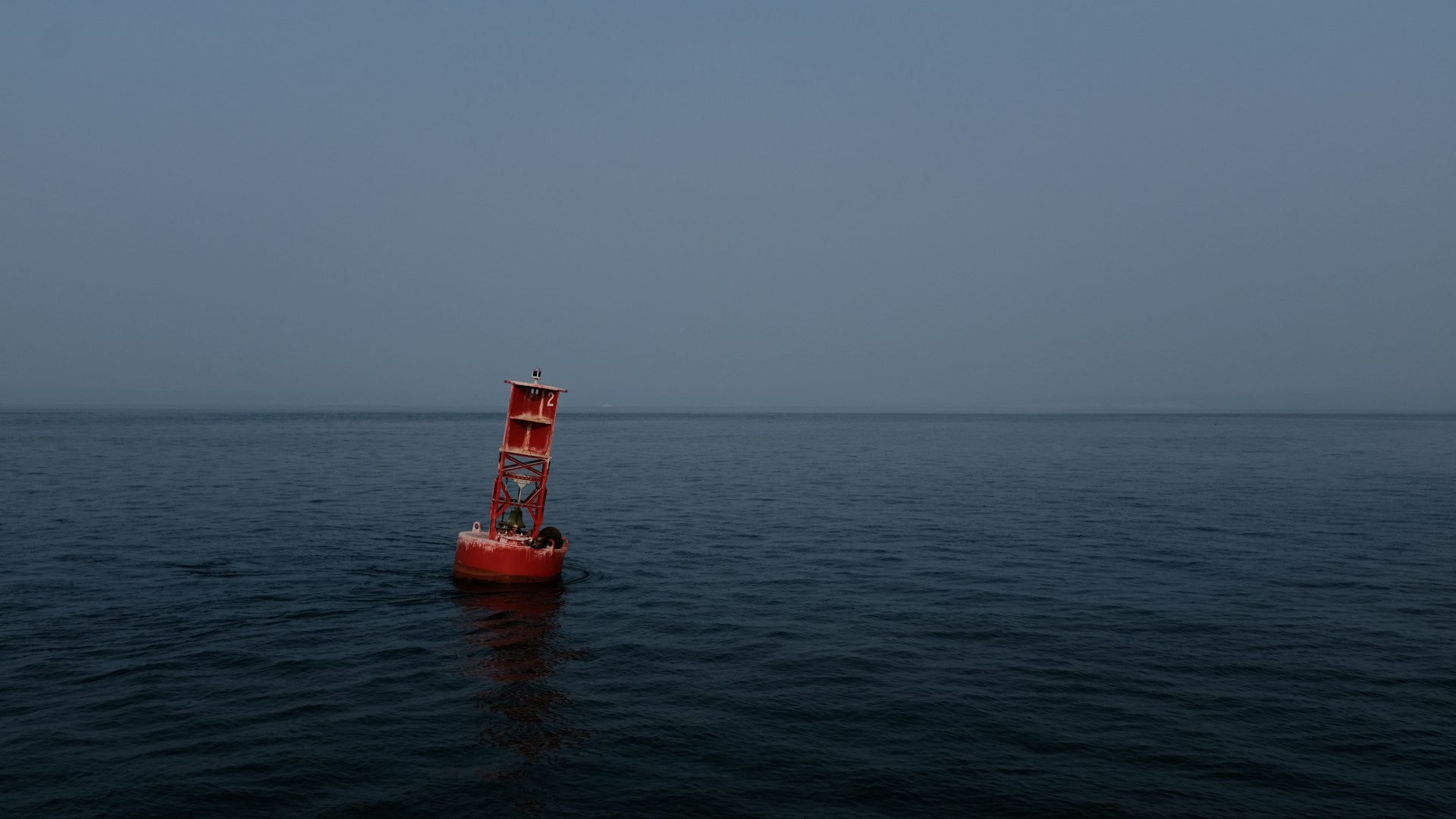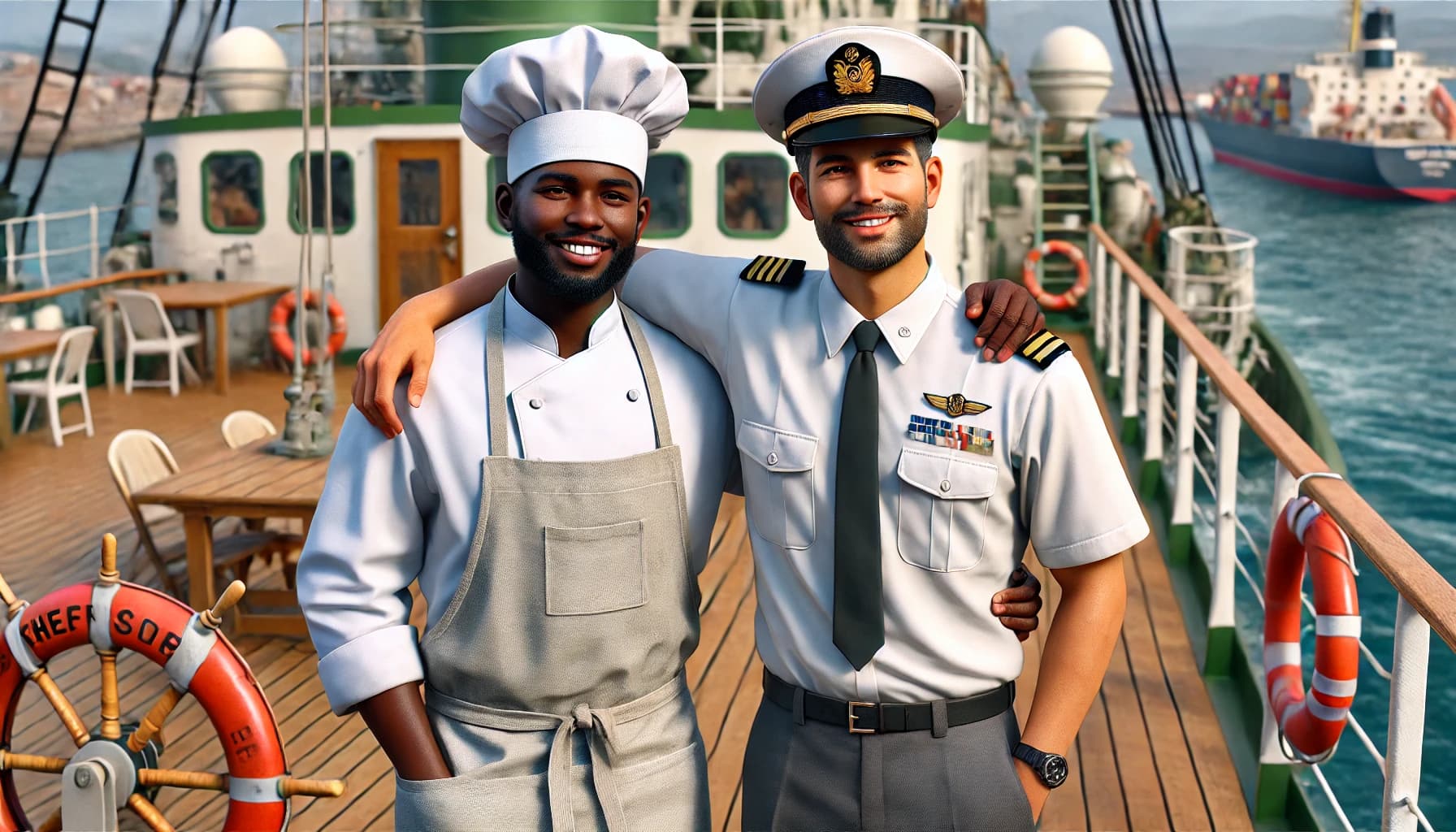The safe and efficient navigation of the ship is one of the Officer of the Watch’s (OOW) most crucial responsibilities.
Navigating a ship in low visibility is one of the most challenging responsibilities for the OOW. With reduced sightlines caused by fog, rain, or other adverse weather conditions, ensuring the safety of the vessel, crew, and cargo becomes paramount. This requires a combination of technical expertise, situational awareness, and teamwork with the bridge team.
In this post, we explore how the OOW can handle low visibility effectively, focusing on essential practices, tools, and procedures for safe operation in the maritime industry.
What is low visibility?
Many factors affect visibility at sea.
The most complex meteorological parameters to forecast are humidity, wind speed, and temperature.
The amount of aerosols (water droplets, ice crystals, or other particles like dust) in the air affects visibility because they reflect incoming light.
Visibility decreases with the presence of more aerosols in the atmosphere. Yet, the aerosol’s shape will also have an impact on visibility. For instance, snow crystals will impair vision more than raindrops.

On average, visibility is higher when winds are coming from the north (in the Northern Hemisphere) than when winds are coming from the south, as the northerly winds frequently bring colder, dryer, and often cleaner air.
What are the usual factors contributing to low visibility? We’ve outlined some of them below:
1. Mist and fog
Fog is defined as visibility below 1000 meters, and mist is visibility between 1000 and 5000 meters.
Invisible steam, liquid water droplets, or solid water particles like ice crystals, snow, and hail are all forms of water that are always present in the air.
2. Radiation fog
On land, fog usually develops at night as the temperature drops and dissipates in the morning when the sun heats and dries out the lower atmosphere. This “radiation fog” can only develop when the sky is clear, and the wind is light.
The same method is not feasible over water since water has a far higher heat capacity than land; hence its temperature does not change throughout the day.
However, the radiation fog may spread to the sea, resulting in an all-day low vision for offshore installations.

3. Advection fog
Fog can form when relatively warm, humid air travels over cold water (or land). Advection fog, as it is often known, typically covers a broader region than radiation fog.
It occurs most frequently when the water is still relatively chilly in the spring and early summer. Advection fog will primarily be connected with wind directions between the south and west in northern Europe.
4. Haze
Large amounts of dry airborne particles, such as dust or smoke, can significantly limit visibility. Haze can originate from both natural and artificial causes.
5. Rain, drizzle, showers
Rain rarely causes the visibility to drop below a few kilometers (typically 4-8 km in moderate rainfall). This is because there will be fewer water droplets in the air than in a foggy environment, resulting in less light reflection.
However, drizzle, precipitation with smaller water droplets than rain, frequently comes with mist and reduces visibility to 1 to 5 kilometers.
The visibility may momentarily fall to less than 1000 meters in conjunction with solid showers or thunderstorms.
6. Snow
When it snows, visibility can quickly be decreased to less than 1000m because snow crystals reflect light more than raindrops.

The role of the Officer of the Watch
The OOW is responsible for the safe navigation of the ship, even in challenging conditions. This includes monitoring weather conditions, using navigation aids, and coordinating with the bridge team. Below are critical steps to handle low visibility:
1. Proactive planning
- Study the ship’s sailing path and weather conditions in advance.
- Review navigation charts and ensure they are up-to-date.
2. Monitoring weather
- Continuously assess visibility levels and changing conditions using radar, GPS, and visual checks.
- Incorporate STCW training principles for effective decision-making.
3. Team coordination
- Communicate with the bridge team and ensure all personnel understand their roles during low visibility.
- Notify the master immediately if conditions worsen.

Essential practices for low visibility
To navigate safely, the OOW should follow these best practices:
1. Reduce speed
- Adjust the ship’s RPM to match visibility levels. Reduced speed allows for better control and quicker reactions to obstacles.
2. Use navigation aids
- Leverage radar, AIS, and GPS to track nearby vessels and obstacles.
- Maintain a sharp radar watch to detect hazards in reduced visibility.
3. Employ sound signals
- Activate the fog horn and ensure it is functioning properly.
4. Increase lookouts
- Assign additional personnel as lookouts to enhance situational awareness and ensure a 360-degree view.
5. Log key data
- Record all critical information, such as position, time, and speed, in the ship’s logbook.
6. Secure the deck
- Cease non-essential deck work to avoid distractions and potential hazards. Ensure crew members are safe in their cabins.

Navigation tools and technology
Modern technology plays a vital role in ensuring safe operation during low visibility:
1. Radar and GPS
- These tools provide real-time data on the ship’s position and surrounding obstacles.
2. Automatic Identification System (AIS)
- AIS helps track nearby merchant ships and other vessels, reducing the risk of collision.
3. Electronic Chart Display and Information System (ECDIS)
- ECDIS enhances navigation accuracy, particularly in challenging weather conditions.
Enhancing safety through training
A key element of ensuring safety in low visibility is proper training. STCW training equips officers with the skills to handle adverse conditions and ensures compliance with international maritime safety standards. Training focuses on:
- Building situational awareness.
- Mastering navigation aids.
- Practicing emergency response procedures.
To summarize
Handling low visibility requires the Officer of the Watch to combine technical expertise, teamwork, and proper planning. By following best practices and leveraging modern tools, the OOW ensures the safety of the vessel and its crew, even in the most challenging conditions.
As an Officer of the Watch, you are integral in ensuring safe voyages—and we’re looking for you! Are you ready to enhance your skills and gain valuable sea time? Join the maritime industry today and embark on a fulfilling career. Explore opportunities that help you master the art of safe navigation.
Martide is a trusted crewing platform by shipowners and industry leaders. We post vacancies daily to bring seafarers like you closer to the maritime career of your dreams.
Want to kickstart a new journey? Build a resume, download our free mobile app from the Apple App Store or from Google Play then browse our vacancies, and apply today!
This blog post was originally published on February 22nd 2023 and updated on December 24th 2024


Gavin Hirst
Gavin is a contributing writer to the Martide blog who covers topics ranging from life at sea to maritime crew management software. A native Brit who is now based in Auckland, NZ, Gavin is also an SEO expert and partner in a successful digital marketing agency that has offices in New Zealand and the United Kingdom.
New Zealand




